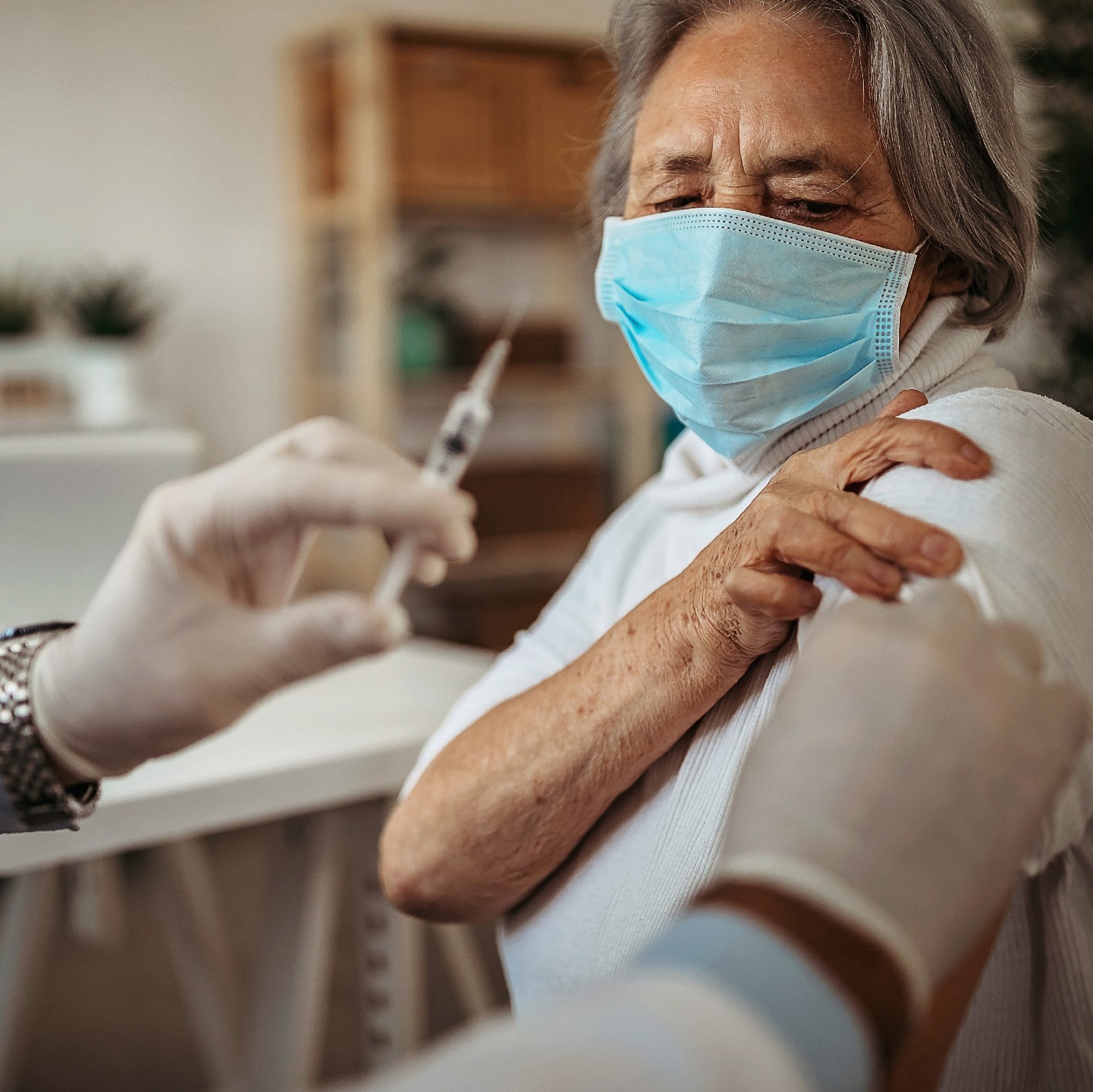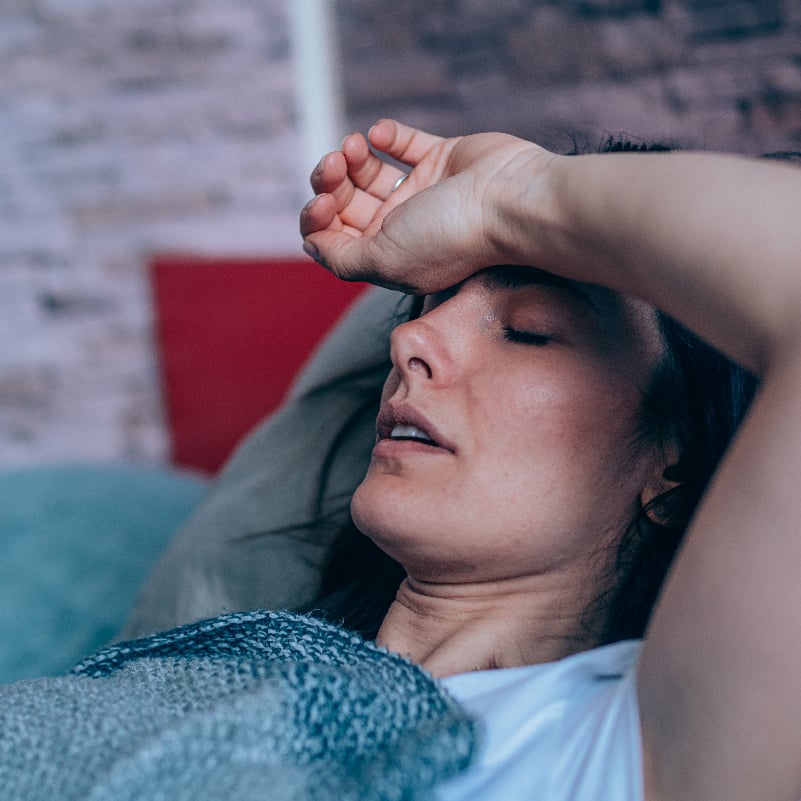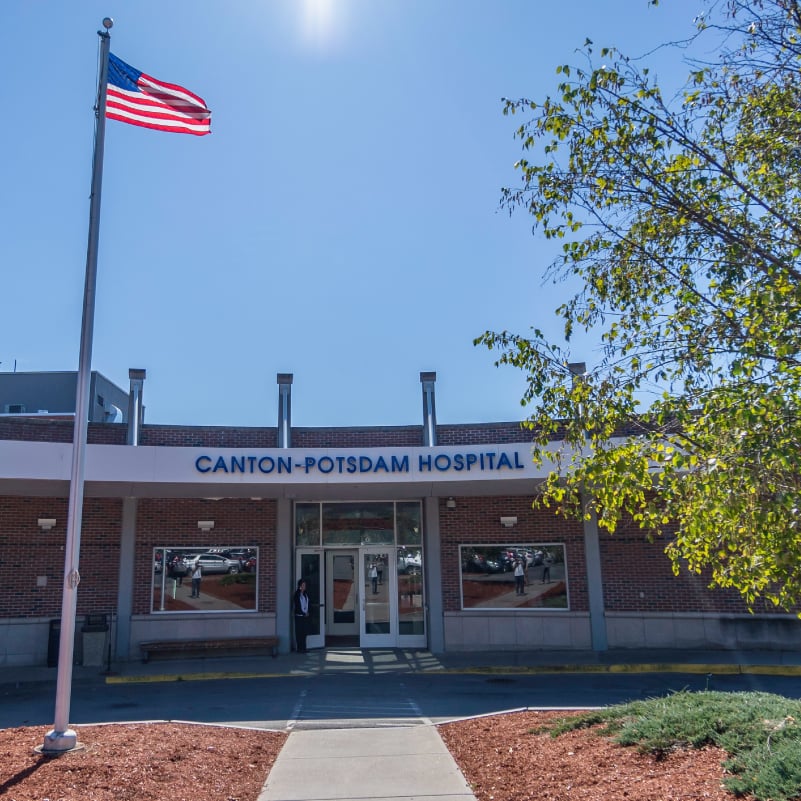Over the last two years, life has been unlike anything the world has collectively experienced before. More than 5 million people have died worldwide from the COVID-19 virus – something most of us didn’t know existed before December 2019.
Thanks to a grant from the Patient-Centered Outcomes Research Institute, a team at Rochester Regional Health conducted a study of current literature about grief and loss during COVID. The goal of the study was to better understand and cope with the challenges and situations presented by grief and loss during the pandemic and disseminate the study to healthcare providers and patients. The entire scope of their work can be viewed online.
Scarlett Aeckerle, LMSW, is the Project Coordinator for the PCORI grant at Rochester Regional Health and explains how going through the experience of grief or loss is different during the COVID-19 pandemic.
Grieving in a pandemic
For the 800,000 people who died from COVID-19 in the U.S., each person’s death ripples outward, bereaving at least nine other people, according to one study’s estimates. Beyond the human deaths, people have lost their prospects for the future, jobs, relationships, graduations, and major life experiences.
Expressing the grief that comes through loss manifests in several forms – including anticipatory, complicated, cumulative, and disenfranchised grief. [link to first grief & loss article]
The deaths of children, spouses, parents, and friends each create their own form of pain and grief. These can be exacerbated by a lack of closure or lack of ability to say goodbye due to COVID-19 restrictions on who can visit a patient.
COVID-related losses that are not discussed as frequently as deaths include:
- Hopes and dreams for the future
- Important events (i.e., weddings, graduations)
- Relationships – romantic and friendships
- Physical abilities and health
- Control and certainty over circumstances
- Childcare
“Whether these changes to a person’s life create uncertainty, raise stress and anxiety levels, or are causing serious mental health concerns, each person going through this should know they are not alone in their grief,” Aeckerle said. “Many people are going through their own experience of grieving and expect that they won’t feel normal.”
Complicated grief
Our collective sense of normalcy is already significantly disrupted from the last two years. Similarly, the process of grieving is being disrupted for many of us. This applies not only to those who lose friends and loved ones to COVID-19, but also for healthcare workers who spend hundreds of hours each month caring for the sickest patients in hospitals and other medical facilities.
The disrupted grieving process can take a number of different forms. For some, feelings of survivor’s guilt may set in. This centers around an extreme sense of guilt and other emotions related to surviving something that others did not.
Because of social distancing and quarantine guidelines for large gatherings and public events, many people had to delay funerals, memorial services, calling hours, and other traditional forms of grieving. This can be a key part of mourning and can leave people with a lack of closure.
“With some COVID-19 patients, friends and loved ones find themselves in anticipatory grieving – grief before a loss happens – and have those emotions intensify if there is a lack of closure,” Aeckerle said.
This becomes more complex in some ways with people who experience a death unrelated to COVID-19. If a loved one dies from cancer or a car crash, the person may feel disenfranchised and unacknowledged – even less important than others. Children experience this, too. If their grief is not recognized, it can manifest in the same form of disenfranchisement which makes them feel forgotten or unseen.
Researchers found families supporting one another in the midst of a loved one’s death are able to transcend and endure the sense of loss that follows.
Racial differences
In the United States, the novel coronavirus has impacted a disproportionately higher number of people of color – including immigrants and indigenous people – than white people. There are a myriad of reasons for this, such as:
- Access to fewer healthcare resources
- Distrust of healthcare systems
- Institutional racism
- Anti-Asian bias, including an increased number of violent attacks on Asian-Americans
Beyond patients, this extends to healthcare workers and caregivers of color. According to researchers, 63 percent of healthcare workers who died from COVID-19 were people of color. They were also twice as likely to test positive for COVID-19 as compared to their white co-workers.
“It is incredibly important to recognize the impact of systemic racism,” Aeckerle said. “Without acknowledging the role that it has played and continues to play in the pandemic, changes cannot be made to correct its effects and save lives in the future.”
Admitting this can also lead to understanding why so many healthcare workers and caregivers are experiencing such high levels of burnout. A CDC survey of more than 26,000 public health workers released in August found 53 percent reported symptoms of depression, anxiety, suicidal thoughts, or PTSD.
For nearly a decade now, men and women working in healthcare have been working longer hours and caring for more patients due to lower staffing levels. Coupled with the COVID-19 pandemic, this is leading to compassion fatigue, and a lack of time and energy to process and work through their grief. Aside from losing a significant number of patients to COVID-19, many are seeing co-workers and friends die of the virus, as well.
All of these effects are acutely felt by women, who are forced to balance not only their personal and professional lives, but also parent their children and are more often in charge of childcare.
What to expect next
The task of reorienting to life during COVID-19 has been immensely difficult. Just as difficult will be learning to adjust to life after the COVID-19 pandemic.
Patients who are dealing with the long-term effects of COVID-19, known as COVID “long haulers”, will need both physical and emotional support. Estimated to affect as many as 50 percent of COVID-19 patients, these patients are unable to return to functioning in the same way they did before contracting the virus. Some symptoms include continued body aches, excessive fatigue, shortness of breath, and brain fog.
Patients who survived time in the hospital and ICU stays will need mental health resources, as well. Heightened levels of anxiety and depression are common among this population.
People who experience grief and loss will go through it for longer periods of time, according to researchers. The unexpectedness and lack of comprehension of deaths from COVID-19, compounded by dealing with these feelings in social isolation, will need to be accounted for.
So what are some of the ways to help?
Normalize people’s feelings: Making each person feel valid in their emotional responses is a good first step toward working through feelings of grief. Let the person know their feelings and reactions during this intense and stressful time are normal.
Stability: Seeking out ways to establish a routine can help to ground a person who feels unsteady. It can be as small as a 5-minute walk at the start of their day.
Give it time: Grief is not linear. Some people may have days or weeks that are harder for them than others. Anniversaries can trigger emotions they were not aware were still there. Be patient and be there for them.
COVID-specific support groups: With so many people mourning the loss of a friend or loved one, groups of grieving people come together to remember those who died. Solace can be found in alternative ways to memorialize the deceased if a funeral service was not an option during the pandemic.
Find a way to communicate: One of the good things that has come from the pandemic is the expansion of technology to help us talk with one another more readily. Using Zoom, telemedicine, and other forms of communication to stay connected can help people reach out in times of need.
“The more that society can do to recognize the situation we are all in together and help one another through, the better off we will all be,” Aeckerle said.
More reading & resources
Other healthcare providers and patients who have experienced COVID-19 trauma, grief, and loss have done their own writing and research on the topic.
A list of some of their articles, handouts, and books is listed below.
- Racial disparities-associated COVID-19 mortality among minority populations in the U.S.
- DSM V
- Strategies to cope with the COVID-related deaths among family members
- Coping with Grief & Loss – CDC
- Dealing with loss during covid-19: Helping children and families
- Managing bereavement around the Coronavirus (COVID-19)
- Disenfranchised Grief
- "Why Couldn't I Go in To See Him?" Bereaved families' perceptions of end-of-life communication during COVID-19
- Complicated grief: What to expect after the Coronavirus pandemic
- Grief and the COVID-19 pandemic in older adults
- The psychology of grief: Cultural differences in death and dying
- Easing grief through religion and spirituality
- What it means to be a Coronavirus "Long-Hauler”
- Living With Grief
- Predictors of grief following the death of one's child: The contribution of finding meaning
- Pandemic Grief Scale: A screening tool for dysfunctional grief due to a COVID-19 loss
- Anxiety levels among physician mothers during Covid-19 pandemic
- Predictors of prolonged grief, resilience, and recovery among bereaved spouses
- Phone follow up to families of COVID-19 patients who died at the hospital: Families' grief reactions and clinical psychologists' roles
- Surviving COVID-19 survivor's guilt
- Navigating loss induced by COVID-19
- Grief: The epidemic within an epidemic
- Witnesses and victims both: Healthcare workers and grief in the time of COVID-19
- Perspective on control during the COVID-19 pandemic
- Can you PACE yourself? Using PACE in the clinical setting, at end of life and in grief work
- Anosmia in COVID-19: What care providers need to know
- COVID-19: Understanding and mitigating trauma in ICU survivors
- Tracking the reach of COVID-19 kin loss with a bereavement multiplier applied to the United States
- Loss and resilience in the time of COVID-19: Meaning making, hope, and transcendence
- Grieving life and loss
- Worden’s tasks of mourning through a social work lens
This study was made possible by funding from the Patient-Centered Outcomes Research Institute (PCORI). The study was conducted by Scarlett Aeckerle, Amy Cousino, Zachary Brown, Sharyl Frohe, Rhonda Lanni, and Mark McCloskey, with the support of the PCORI Advisory Council and Alise Gintner.









